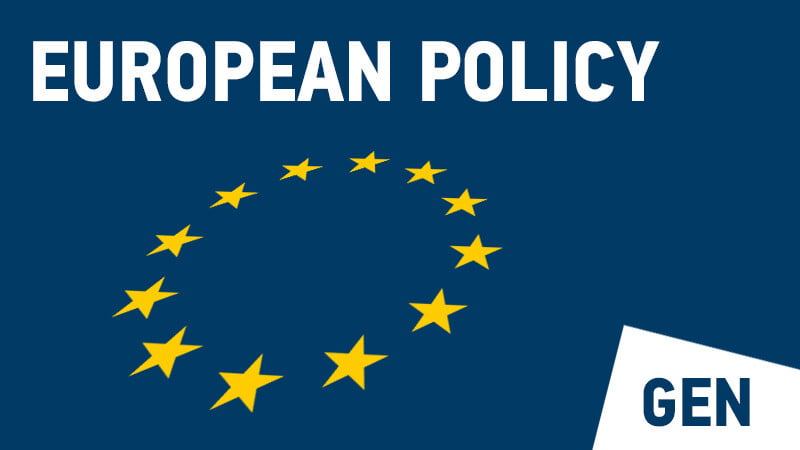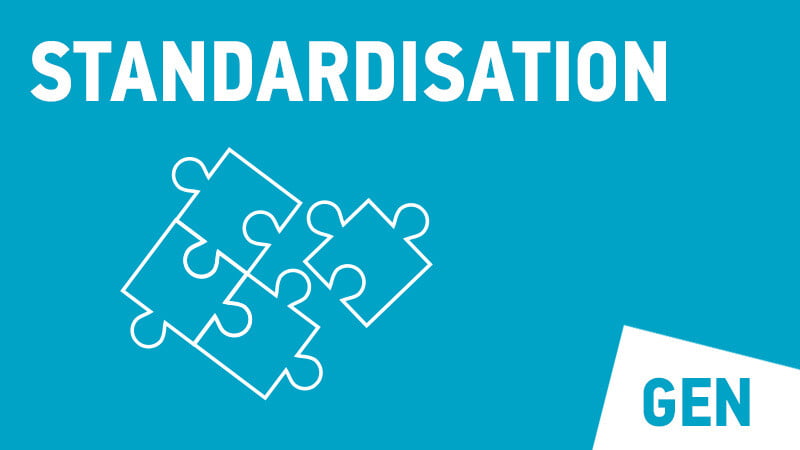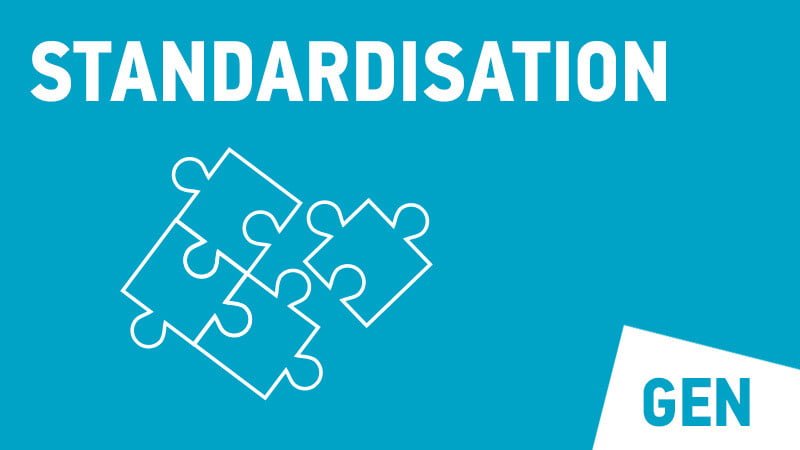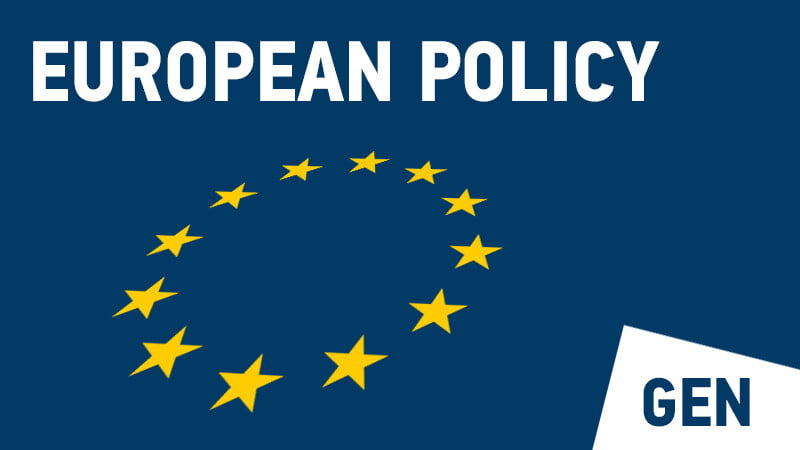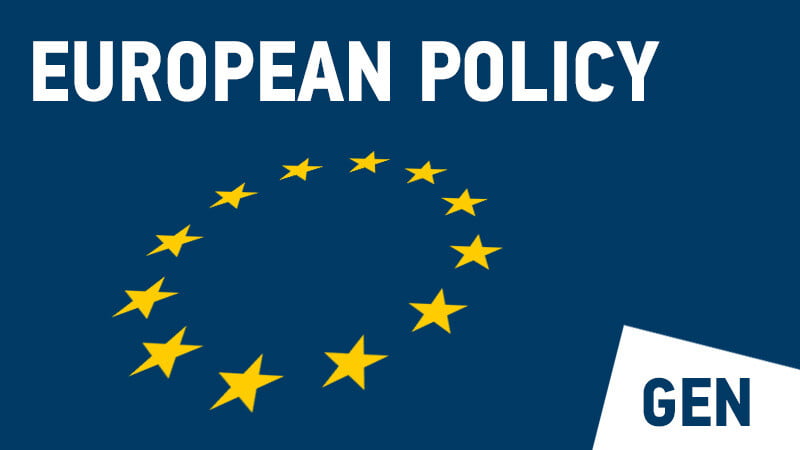GEN – 1468.00. On Tuesday, 07 March, the European Commission held the Ecodesign and Energy Labelling Consultation Forum meeting on the review of the regulations on air conditioners and comfort fans products (Regulations EU 206/2012 and 626/2011).
Subject | Notes from the Consultation Forum on air conditioners and comfort fans |
Date | Tuesday, 07 March 2023 |
Time | 10:00-17:00h (Brussels Time) |
Venue | Centre Borschette |
Participants | Massimiliano Ferrario, Francesco Scuderi, Henk Kranenberg, Guglielmo Colombo |
Agenda
Time | Agenda |
10:00-10:15 | Welcome and introduction, Approval of minutes of CF meeting on market surveillance (5December 2022), Adoption of the Agenda |
10:15-12:00 | Ecodesign of air conditioners and comfort fans: presentation and discussion of the working document. |
12:00-13:15 | Lunch break |
13:15-15:00 | Update regarding the impacts of the different options regarding the Energy labelling of local space heaters, air conditioners and comfort fans |
15:00-15:30 | Coffee break |
15:30-16:15 | Information unit: Upcoming study on potential Ecodesign requirements on critical raw materials |
16:15-16:45 | Information point: Update on the Meerp review finalization (point to be confirmed) |
16:45-17:00 | AOB |
17:00 | End of meeting |
Notes
European Commission delegation composed by Mr Rivière and Mr Niels Ladefoged.
Next steps
Deadline for comments after the meeting: 14 April 2023
Introduction and Legislative process
New studies published since 2019 (addendums on fixed double duct, comfort fans and functional requirements). In 2019 a merging of the labels was proposed but additional studies were asked. This is the last consultation forum. For the energy labelling and there is no complete document ready yet. MEPS revisited because of changes of conditions and market. Spot coolers are now included, used fully inside areas that need to be air conditioned but also can withstand with heat being released (industrial application).
Any ventilation unit is out of the scope and the same for close control units. To avoid further delays, they are excluded from the scope of the current revision with the idea to include the close control units in the lot 21 revision (Regulation 2016/2281).
The revision work should be completed by the beginning of 2024.
General questions or comments
Austria: is it possible to extend the scope over 12 kW? (COM replied that there is the Regulation 2016/2281 but it can be evaluated)
Germany: It will provide detailed comments, asked clarifications on the close control units/server room air conditioners and software updates. Approves the mention of the compensation method for the future review.
COM: Server room is the same as close control, normally not reversible, we can remove the definition of close control air-to-air heat pump.
Italy: there is a long list of comments that will be provided in writing, first questions and comments:
what is indoor air filtration? Air purifiers, as some new products recognized at international level, are included?
Please improve the definition of comfort fans, we indeed have a problem on the definition of the functionality. We will try to avoid loopholes. Define clearly the products included in this regulation or exclude them.
Include also packages in the definition of close control units among the exclusions.
Declaration of identity: modify “technical information” in “technical documentation”. For software update Italy would like to elaborate on the proposal of Germany, the article has been copied from previous regulations.
COM: will add definition of indoor air filtration. For comfort fans we have the problem to define the functionalities. Try to avoid loophole, open for suggestion.
On close control we can adapt the definition. Need proper definition for air purifiers otherwise any bladeless fan with a filter can become it.
Eurovent: is the intention to include destratification fans? Support to Italy’s comment on close control packages. Missing definition of portable room air conditioner.
COM: Industrial fans shouldn’t be included.
Belgium supported Italy on air purifiers, ECOS asked to include close control in the scope.
COM replied that will be evaluated the inclusion in 2016/2281, not in the current revision of lot 10.
Single Ducts and Portable Double Ducts
New MEPS
COM: Study made in 2019 seems to confirm the hypothesis on the average use during a year. Splits are used more also because the commercial use increases the average picture. F-Gas completely moved these appliances to R290: design of the products to reduce the amount of refrigerants and that’s why the current base case is lower than what was expected in 2019. Need to lower the MEPS: 2,3 becomes 1,9.
No heating allowed for SD and portable DD since it seems it was not better than electric joule heating (and manufacturers won’t likely include electric resistance due to the propane).
Italy: Support change in MEPS, will assess it with the Energy Label, in terms of technology neutrality, there is no understanding why a functionality such as heating for portable double duct is prohibited based on the possibility for customers to remove one duct and use the appliance as a single duct.
APPLiA and Eurovent shared the Italy comments and will send detailed comments in writing on the new requirements.
Fixed Double Ducts and other (splits, etc.)
COM: FDD and others (splits, window, wall, PCA). MEPS proposed for FDD is the 2nd tier of the 2021 addendum. Roughly 50% of the models are banned, mainly those without inverter compressor.
Air flow constraint applies at -7°C or lower (fixed bivalent point). Method is still EN 14825.
The Controls Verification Procedure (CVP) is now being developed by CEN based on experience from Japan and US. While waiting for a compensation method, this would make sure that the declarations at low part ratio are in line with the performance of the equipment and not improperly modified for seeking the maximum efficiency.
Low power modes – maximum power for comfort fans & portable A/C. Not for other air conditioners, COM plans to clarify that.
Eurovent: we have different data about FDD, this threshold value cut out 80-90% of the products. Very small gap among BAT in cooling and heating with respect to the proposed MEPS. No sufficient range to provide different tier and efficiency products.
JBCE: Statement on F-Gas and PFAS, reducing design options and choices. The MEPS will be put in jeopardy (value of 6 is very ambitious). Since these 2 pieces of legislations are running in parallel of Ecodesign, it might be better to have an additional impact assessment. We propose the Commission to check across the DGs. Delay implementation timeline.
EHPA: Supported JBCE. Regarding Air Flow rate, we noted that it has been included. Our intention was that maximum airflow rate shall be taken into account only during testing, not during actual operation as it can have impact on equipment, user and safety. Regarding bivalent point, we appreciate that it has been clarified.
EPEE: If 2 other legislations were not there today, the current MEPS would be fine. The current impact assessment does not consider that. In transition, MEPS might be reached but at a certain cost, turning consumer to lower efficiencies.
Italy: how do you calculate that 3.3 phase out roughly 50% of the products? You showed no graphs for these. Consider the impact of the new refrigerants for MEPS of Lot 10, the previous comments are reasonable. Why have you increased to 25% the impact of the controls on the energy efficiency index? Apparently, part of the controls is verifiable only via paper check and not via laboratory check or visual inspections of the authorities.
Netherlands: Don’t go higher than 6.1 as it is boundary of A++. On refrigerants, the low GWP propane, you were expecting them to be at least as efficient or more efficient than the other ones. This didn’t show on the market. Not in favour to look too much at refrigerants you might not want on the market anymore. ED and EL are meant to stimulate innovations.
Cyprus: why efficiency is based on SCOP/SEER and not on eta?
COM: Regarding the question from Netherlands, we can have a look to see if there are technical changes that justify having a SEER at 6. On refrigerants, the PFAS is planning all the alternatives of HFC and HFOs that are also used in the mixtures to get low GWP. Only alternatives are propane, CO2, water and ammonia. Propane is flammable, can be a solution for small units. CO2 might not be very efficient. It might indeed be necessary depending on the option, we might have to reconsider the impact. COM agrees with the industry on that point. The share of 50% of FDD is what is in the complementary study. We have added the control in the information requirements, but it is still provisional, we can define them better in accordance with the industry. The 25% impact is in line with electric heaters. This can be discussed in technical meetings. We can have a look if there is any technical chance to set minimum SEER elsewhere. The COM is open for comments on these points.
ECOS: Does not agree that Regulation shall be delayed in terms of refrigerants and shall not be a reason to delay.
APPLiA: Supports clarification on standby requirements and supports statement on efficiencies, the Commission to re-assess the impact.
EPEE: Control correction factor is now proposed to be at 25%, which is too high. Some applications are not applying for cooling, how will this be compensated? How will this apply with units having optional controls? still some question regarding the application of air flow limitation (ensure a proper declaration so it has to be applied to testing at -7 and +35°C).
Eurovent: Supports previous statements on impact assessment and alignment between the DG’s, SD and portable double duct are excluded from the functional requirement? Why is there a sound power requirement for outdoor unit?
Germany: a flat LCC opens the possibilities to even higher energy efficiency requirements. There wil be exemptions for PFAS, it is not a total ban. The requirements proposed for sound power are outdated, suggest reducing by 5 dB(A). Why is CVP required for cooling only?
EHPA: support the latest statement of Eurovent and the comment on control factors from EPEE. Maintain 15 working days for spare parts delivery. Not all the spare parts can be replaced by end user and commonly available tools may be not sufficient for repairing and maintenance operations on air conditioners.
Eurovent: support to statement of EHPA. Rephrase the comment on equipment able to work in cold climate.
Sweden: Welcome proposal and labels in general. When it comes to standby, we think it’s an error as Applia mentioned. We would like to see similar requirements on low power modes for other products (split mainly). If a new impact assessment (not recommended from us) will be made, then include also them.
Italy: why didn’t you copy-paste the spare parts topic from other regulations? There is a mistake in the verification tolerance of stand-by: it is not 5%.
ECOS: strong support for the proposal in general. We welcome the seasonal efficiency requirements. WD is closing a gap regarding the scope. We support comments from Netherland, Germany to increase the minimum efficiency requirements.
EPEE: we support position of EHPA regarding spare parts and the one dedicated to end users.
COM: Both F-Gas and PFAS will have exemptions. Air flow limitation is intended to assure comfort conditions for the end user, the intent is to make sure that when in normal mode operation the units doesn’t have excessive airflow. The request of the manufacturers on this point is reasonable. Someone was surprised for outdoor sound requirements for SD and DD, but even if there is no outdoor unit the air goes outside therefore it brings out also the noise. Sound power thresholds are the same as previously but consider the label where there will be a possibility to improve it. Hope to check physically the control factor and not rely only on documentation. The information about different climates will be put on the energy label. We are available for additional technical comments.
Comfort Fans
COM: Proposal to solve the issue of the diameter. Use the flow instead of the diameter. In the working document we have three main division sets of fans: ceiling, tower and the rest. The rest may be a table fan, pedestal fan or floor fan. Proposed many definitions adapted from the IEC ones. MEPS for ceiling, tower and other are based on WD of 2019.
Denmark: there are many ceiling fans absorbing more than 125 W and it seems they will not be covered nor in this nor in the fan regulation. How about including them here? On the SV we have made some calculations for the ceiling fan extending the scope above 125 W but we don’t think that the formula as made available now will work.
COM: we think that it is not that common in the residential sector to have ceiling fans absorbing more than 125 W.
APPLiA: we still need to bear in mind some of the definitions discussed earlier because it impacts the equipment you can consider involved or not in this regulation. Still difficult to establish where the different comfort fans fit.
Energy Labelling
VHK: Main intention is to have one scale for the heating performance of equipment as in 2022 proposal, as no new document has been issued anymore. The proposal of last year did not incentive the development of electric heaters, confined in just one class. A consumer study has been conducted investigating people’s reaction to “within category” and “across category” labels. It seems that with a merged label, consumers can recognize the most efficient technology.
The “within category” experiment: first graph on the left compares ELSH without energy label with a possible merged label. The higher the bar, the more the people preferred that option. People pay attention on efficiency as justified by the drop in gas LSH. The two graphs on the right investigate the impact of some features introduced like the emissions for solid fuel LSH and the GWP of the refrigerant in residential air conditioners.
The “across category” study looks at all the products merged. With the current label the solid fuel heaters are favoured (because of the biomass factor) but looking at the merging label they strongly decrease while RAC increase. Big drop in popularity for solid space heaters. Label is efficient in enabling consumers to recognise this. Five alternatives for the design of the label and the second one is the preferred one. This gives an indication about which options are more easily understood.
Together with commission we are trying to understand the best solution. Columns are product groups while from top to down we can see the different policies. (1) Rescaled is mandatory according to the energy label framework; it does not change the scope. (2) we add the ELSH to the labelling of LSH but still separate regulation. Separate labelling for CF. Policy option (3a) and (3b) are similar except for the cooling aspect. LSH and reversible air conditioners are merged. For cooling they are combined in 3b while they are kept separated for policy 3a.
The four options were put on the diagram to investigate potential primary energy and GWP emissions savings. The only rescaling already achieves a positive amount of savings. The second bar is the effect of shifting sales from ELSH to room heat pump. The third is the additional savings of merging product group so that consumer can identify the most efficient product among appliances providing the same function. Option 3(b) is the one with the most savings.
G-F-E classes very close, because of ELSH. Other groups are spared. Upper 4 classes are achievable from room air conditioners and FDD.
ECOS: We agree on including also electric heaters in the scope of the energy label. We are afraid to see that fossil fuel can reach class D. Policy 3b is the scenario to go.
Bioenergy Europe: better to have this document in advance. We have some concerns to put together LSH and RAC that serve similar purpose but are different (as laptop and smartphones). The goal is to empower consumers to have more responsible choice. Very efficient products with very inefficient products: risk that R&D will not be developed since inefficient can’t go up than D and most efficient can’t go lower than C.
Belgium: proposal even improved; each product can move at least between two classes.
Eurovent: Request for additional joint meeting to discuss the proposal. No time to comment due to not sharing the documents. Possible to share the questions asked to the consumers?
COM: Yes, consumer study can be shared.
EHPA: complicated to give comments however we recall the support for the merging of the label.
EPEE: we support the merging of the label.
ANEC/BEUC: support for 3b.
Cyprus: the merged energy label may create problems with financial support incentives where the higher classes are subsidised.
Italy: is against the merge of energy labelling scales, and it maintains its compromise proposal that was shared in Summer 2022. We do not have the document about the consumer study but the previous one stated that consumers will select what they need, what can be installed in their home, and what they can afford, then they look at the energy label of that kind of appliance. The position of Italy for the moment is very negative.
Slovakia: we support Italy.
Norway: it has the highest HP penetration rate in Europe: 1.1 million HPs for 2.6 million households. The proposal still raises concerns to us due to a lack of energy efficiency gain and the proposed energy labelling classes for product groups are grossly misleading consumers: the Commission proposal classes are based on laboratory tests that do not reflect real life efficiency, and the actual efficiency is depending on a variety of indoor and use factors. We are against the merging of the labels. We see a complication by having to revise the CC factor and update the product regulation accordingly. Extremely concerned that the climate has been removed.
COM: in Ecodesign we will have one climate but in energy label we are discussing for having the three climates.
Germany: we are supporting this refining labelling scheme. For heat pumps there is a gap between standard conditions and real-life employment but can’t be addressed by the energy label. Maybe we can show the power at conditions different from +7°C.
COM: beginning of next year we should complete the review of Lot 10.
ECOS: what GWP threshold to distinguish between low or not? We propose 5. COM: not simple answer.
Netherlands: our position has not changed, supports the merging. Not huge fan of displaying efficiency number next to the letter.
Portugal: we are not really a big fan of the merging. Concerning the merged label: different technologies now have different trade-off with different icons and that information is important for consumers.
COM: trade-off is a difficult discussion. The way we are trying to address it here is to focus on the main indication on the energy efficiency and for solid fuels LSH we know there is an issue about the emissions. Particulate emission may be an information that will be displayed on the label. Credible and trusted information on things like energy efficiency and pollutant emissions: that’s the farthest we can go.
Austria: very curious concerning the studies to understand better the background. I still have a fear that with merging we are putting the energy efficiency at a too high level for consumers. The label is not the major driver with the crisis; bans and financial incentives will do it.
APPLiA: in favour of separate scales.
Bioenergy: energy label address efficiencies, why are we showing other things like particulate emissions? Why not extending to everything?
Slovakia: supported Italy
MEErP (Mr Polverini)
As soon as ready it will be the base for the new revisions (like on servers and data centres).
Updates on Ecodesign measures on scarce, environmentally relevant and critical raw materials and on recycled content (Mr Polverini)
COM: The aim is to have a horizontal policy. Interplay with ESPR: why not expanding this study to the scope of the ESPR which is much broader. The approach taken was to have something that allows us to deliver rapidly on the products in scope.
Start of study in Q2 2023 and can contribute to ESPR.
Other policy updates
ENTR Lot 1 (professional refrigeration): Just ended the period for feedback after the CF and are in the process of analysing in the content in view of the next steps. Based on first assessment, no big sources of disagreement with the E.C. Interplay with f-gas and PFAS will be considered for this revision.
Ventilation Lot 6: a follow up study will start in Q2 2023.
Lot 21: the review has started and impact in Q2 2023. Plan to have initial CF on what should be reviewed. New approach is to try to organize a short information session before we start the review to understand any specific issues or comments that we want to see tackled.
Review of display is about to be launched. Hope to publish call for evidence before the summer, otherwise in autumn.
Lot 1 and 2 (space heaters): Consultation Forum on 27 April 2023, preparatory documents 1 month ahead of the meeting.
Meeting ended at 16.30h (Brussels time).
Recommended actions
Interested members are invited to assess the notes from the meeting and the related documents. The Eurovent position will be developed during the next PG-AC meeting on 27 March 2023.
Related documents and links
All related documents and articles can be found in the respective sections in the right sidebar.
- GEN – 1468.01 – Cons-Forum_7-March-2023_presentation
- GEN – 1468.02 – Final report consumer survey merged label
- GEN – 1463.00 – Consultation Forum on Ecodesign and Energy Labelling of air conditioners and comfort fans on 07 March 2023
- GEN – 1463.01 – EELCF – Privacy statement
- GEN – 1463.02 – Draft Agenda 2023 03 07
- GEN – 1463.03 – Invitation 2023 03 07
- GEN – 1463.04 – ED ACT and ANNEX Air-conditioners and comfort fans
- GEN – 1462.00 – Planning of the next Ecodesign and Energy Labelling Consultation Forum meetings Q1-Q2 2023 – update
- GEN – 1458.00 – Planning of the next Ecodesign and Energy Labelling Consultation Forum meetings Q1-Q2 2023
- GEN – 1413.00 – Minutes of the Consultation Forum on Energy Labelling
- GEN – 1413.01 – 20220624_Minutes_EELCF_LSH_and_RAC_merged-labelling_v3
- GEN – 1386.00 – Call for evidence: energy labelling for local space heaters
- GEN – 1386.01 – Call for evidence – energy labelling local space heaters
- GEN – 1386.02 – Draft minutes Consultation Forum 2022-03-31 – Ecodesign LSH only
- GEN – 1386.03 – Discussion paper merger label 2019-09-10
- GEN – 1386.04 – Presentation merger labels on 2019-09-10
- GEN – 1386.05 – Working document merging labels (105 pages)
- GEN – 1386.06 – Draft agenda Consultation Forum meeting 2022-06-24
- GEN – 1375.00 – Review Fan Regulation
- GEN – 1375.01 – Commission presentation
- GEN – 1375.02 – Working document including comments made during Consultation Forum
- GEN – 1375.03 – Attendance Consultation Forum 2022-04-01
- GEN – 1345.00 – Call for evidence: Ecodesign and Energy Labelling Air conditioners
- GEN – 1345.01 – Call for evidence ED airco
- GEN – 1345.02 – Call for evidence EL airco
- GEN – 1272.00 – Ecodesign and Energy Labelling Consultation Forums: Updates, and working documents Lot 1-2
- GEN – 1272.01 – SPACE-HEATERS ED sent to CF
- GEN – 1272.02 – SPACE-HEATERS EL sent to CF
- GEN – 1272.03 – WATER-HEATERS ED sent to CF
- GEN – 1272.04 – WATER-HEATERS EL sent to CF
- GEN – 1272.05 – EXPLANATORY MEMORANDUM SH WH sent to CF
- GEN – 1272.06 – Draft minutes EELCF meeting 6 July 2021
- PP – 2022-08-02 – Eurovent comments on Airco and Comfort Fans after the CF of 24 June 2022
- PP – 2017-08-04 – CECED & EUROVENT comments on tasks 1 and 2 of Airco and comfort fans study
- PP – 2018-02-12 – Joint CECED-Eurovent comments on tasks 3-7 review EU 206/2012 & 626/2011
- PP – 2019-03-08 – Eurovent Position Paper proposal combination local space heaters and heat pumps Energy Label
- PP – 2019-09-03 – Joint Eurovent APPLiA comments on Airco and Comfort Fans in view of the CF of 9 September
- PP – 2019-10-08 – Joint Eurovent APPLiA comments on Airco and Comfort Fans following the CF of 9 September
- PP – 2020-02-06 – Joint Eurovent APPLiA input on FDD and SD air conditioners
- PP – 2020-07-29 – Eurovent input review Regulations EU 206 2012 and 626 2011
- PP – 2021-09-15 – Eurovent comments on Airco and Comfort Fans following the CF of 06 July 2021
- PP – 2021-11-15 – Eurovent comments on Lot 1-2 following the CF of 27 28 September 2021.pdf
- PP – 2022-03-30 – Draft Eurovent comments to CF on Fan regulation.pdf
- PP – 2022-04-29 – Eurovent comments after CF on Fan regulation.pdf



